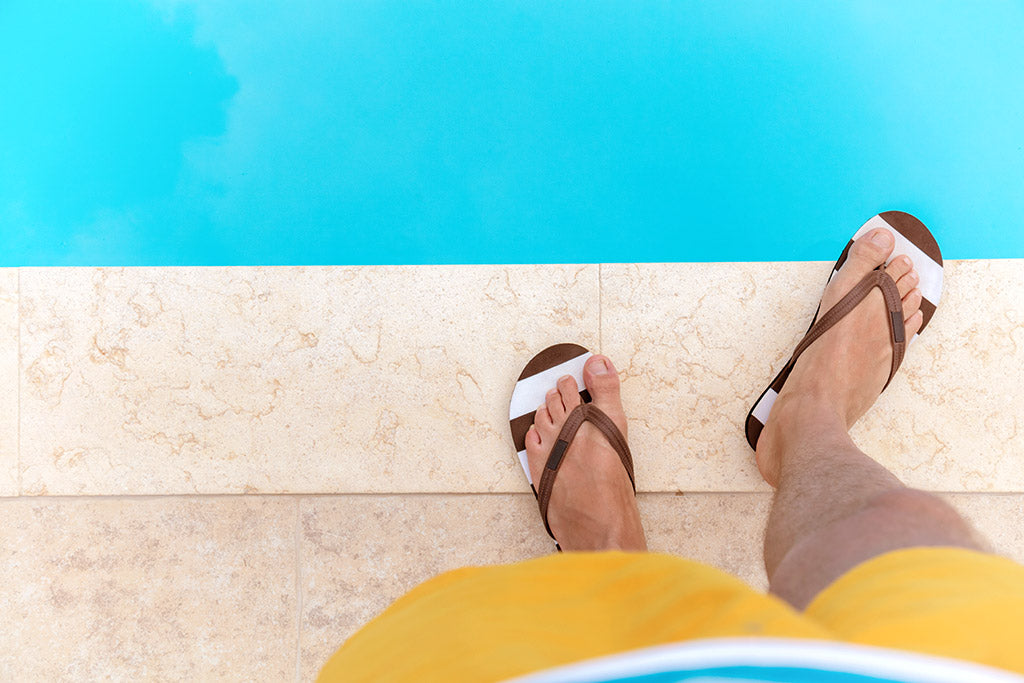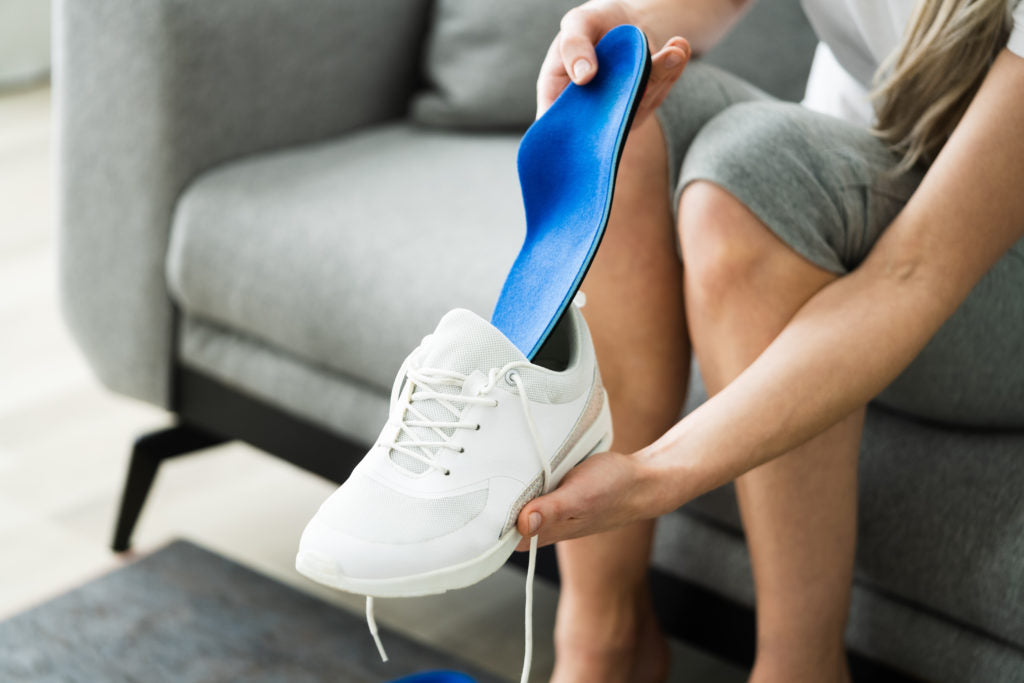
Warts are a skin condition identified as abnormal skin growths. Warts may appear as a bump with a rough surface, or it may be flat and smooth. Classic warts have somewhat of a cauliflower appearance to them. Tiny blood vessels grow into the wart and may appear as dark dots in the center. Typically, the skin lines and creases over the wart are distorted. Warts can appear either alone or in groups. While warts can be unsightly, some warts, such as plantar warts, can also be quite painful and can prevent you from moving comfortably.
There are two types of warts you’re most likely to experience:
Common warts usually occur on your fingers or hands. They are usually about the size of a pencil eraser and usually painless (but may be painful when touched). They can look and feel:
• Like a cauliflower on the surface: small, fleshy, or grainy bumps
• Flesh-coloured, pink, tan, or white
• Rough to the touch
• Sprinkled with black pinpoints or seeds (small, clotted blood vessels)
Plantar warts usually occur on the bottom of your foot. They may be solitary (a single wart) or mosaic (grow in clusters). They can be as large as two inches across but are typically about the size of a pencil eraser. They are commonly painful or tender when standing or walking, like there’s a stone in your shoe. They can look and feel:
• Like small, fleshy or grainy, rough growths on the bottom of your foot
• Like a well-defined spot under a layer of thickened skin (callus)
• Like clusters of small black pinpoints or seeds
• A mass that interrupts the normal lines and ridges of your foot
Warts can be caused by any of 100 or more types of human papilloma viruses (also called HPV), that enter the skin through a cut or abrasion. The virus causes the top layer of skin to grow rapidly, resulting in a wart.
The types of HPV virus that causes warts is contagious, and you can get it through direct contact from sharing personal items such as towels and razors, for example. You can even re-infect yourself by touching the wart and then another part of your body. Plantar warts often spread through warm, moist environments, like public showers and locker rooms where you walk around barefoot.

Most warts are harmless and may even go away on their own without treatment, but they can be embarrassing and you may want to treat them if they are bothersome or painful. You’ll be happy to know there are some simple tips that can help you learn how to prevent warts:
• Avoid direct contact with warts and don’t pick at your own warts
• Wash your hands regularly, especially if you’ve been in contact with someone with warts
• Practice good hygiene in public places like wearing flip-flops or shower shoes in public pools, showers or gyms
• Keep warts from spreading by covering them with a bandage
• Skin cuts and abrasions can make it easier for the virus to enter your body: clean and cover cuts and scrapes, avoid nail biting, and prevent
dry and cracked skin
• Change your shoes daily, and keep your feet clean and dry
• Use a disposable emery board, and don’t use the same emery board, pumice stone, or clippers on your warts as you do on your healthy skin and nail
There are a number of ways you can treat and remove warts on your own, or with the help of your doctor:
• Nonprescription wart treatments: Over-the-counter products that contain salicylic acid can be used to treat plantar warts, along with the regular use of a pumice stone and good foot hygiene. It may take several weeks for them to go away completely. Try Dr. Scholl’s ClearAway® Wart Removers, including solutions designed for common wart removal and plantar wart removal.
• Freezing (also called cryotherapy): Your doctor could treat your warts by applying liquid nitrogen to freeze them. This causes a blister to form around your wart, and eventually the dead tissue (including the wart) falls off. The application of liquid nitrogen can be painful, so your doctor may apply a numbing agent. Cryotherapy can be combined with salicylic acid treatments. There are also nonprescription cryotherapy products available over-the-counter, such as Dr. Scholl’s FreezeAway® Wart Removers.
You should see a doctor about your warts if:
• They’re painful and interfere with your activities or change in appearance or colour
• You’ve tried to treat them yourself, but they don’t go away or keep coming back
• You have a weakened immune system, for any reason
• You aren’t sure if they’re actually warts
What does a wart look like?
Not all warts look alike. The appearance of warts will vary depending on the variety. Appearance and location can help to identify a wart.
1) Common warts are skin growths that usually form on the hands and feet, especially the fingers and toes. These warts are rough in texture and can be very small, like the size of a pinhead, or they can be bigger, like the size of a pea. These warts often have a cauliflower appearance to them.
2) Flat warts typically grow on the cheeks and forehead. They are usually brown in color and are smooth and slightly raised.
3) Periungual warts are normally found under the toenails and fingernails.
4) Plantar warts are generally found on the bottom of the feet, especially the heels and the balls of the feet. Plantar warts often resemble thickened or callused skin, and they may have a visible black dot.
5) Filiform warts are long and spiked in forming a mat-like appearance appearance, typically forming on or around the nose, eyes and mouth. They tend to grow quickly.
6) Genital warts form on the anus and genitals. They may be flat or bumpy. The typical color varies from pink to light or dark brown.
Are warts contagious?
Yes, the virus that causes warts (a strain of human papillomavirus) is contagious. The virus can spread from person to person through touching and from contact with personal items and commonly touched surfaces.
How do you get warts?
Warts are caused by a type of human papillomavirus. The virus can be transmitted through personal contact and also when people share personal items or walk barefoot in public areas. The virus can then enter the skin through a cut or a scratch or abraded skin, allowing the virus to enter the skin and causing a wart to develop.
What causes plantar warts?
Plantar warts form when a type of virus, the human papillomavirus, enters the skin on the foot, typically by means of a scratch or a cut. The virus causes skin cells on the foot to grow quickly, resulting in a plantar wart.
What causes warts on hands?
Warts on the hands are called common warts and are caused by a type of human papillomavirus which can enter the skin via a cut or scratch. The virus then causes rapid skin growth which results in a wart.
How do warts form?
Warts form when a type of human papillomavirus enters the skin and causes accelerated production of cells in the top layer of the skin, creating a growth.
What is a plantar wart?
A plantar wart is a type of wart that is usually found on the bottom of the feet, most commonly on the balls of the feet and the heels.
Do warts itch?
Warts may or may not itch. Some warts can become irritated from rubbing against clothing or shoes. Warts can also become itchy if the surrounding skin is dry and flaky.
Do warts hurt?
Some warts hurt, usually as a result of friction or pressure. Plantar warts are often painful because they are typically located on the bottom of the feet. Friction from shoes rubbing against the skin along with pressure exerted from standing or walking can cause pain and discomfort in some cases.
Do frogs give you warts?
No, frogs do not give people warts. Warts are caused by the human papillomavirus which is only found in humans.
Additional Resources
• https://www.medicalnewstoday.com/articles/types-of-warts#types-of-warts
• https://www.healthline.com/health/itchy-warts#causes
• https://my.clevelandclinic.org/health/diseases/15045-warts#:~:text=Hands%3A%20These%20warts%20are%20called,black%20dots%20in%20the%20center
• https://sites.psu.edu/siowfa15/2015/09/16/do-toads-actually-give-you-warts/
• https://www.mayoclinic.org/diseases-conditions/common-warts/symptoms-causes/syc-20371125
• https://www.verywellhealth.com/what-you-need-to-know-about-warts-1068906
• https://www.webmd.com/skin-problems-and-treatments/warts-faq-questions-answers
• https://www.healthline.com/health/skin/warts#types
• https://www.mayoclinic.org/diseases-conditions/common-warts/diagnosis-treatment/drc-20371131#:~:text=Prescription%2Dstrength%20wart%20medications%20with,liquid%20nitrogen%20to%20your%20wart
• https://www.aad.org/public/diseases/a-z/warts-heal
• https://www.uofmhealth.org/health-library/hw64902#:~:text=Wart%20treatment%20doesn’t%20always,virus%20that%20causes%20the%20wart
• https://www.uofmhealth.org/health-library/hw64902#:~:text=A%20wart%20is%20a%20skin,own%20within%20months%20or%20years
• https://www.mayoclinic.org/diseases-conditions/plantar-warts/symptoms-causes/syc-20352691
• https://www.health.harvard.edu/a_to_z/warts-a-to-z


